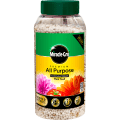

How to grow alliums
Allium flowers belong to the same family as onions, garlic and leeks, as you can tell from the scent when you crush the foliage. There are white, pink, blue and yellow Alliums. Butterflies and bees love alliums, and even the dried flower heads look beautiful in a border or in flower arrangements.
Best allium bulbs to plant
There’s a fantastic range of Alliums available, from huge to small, with round or exotic-looking tangled flower heads. Here’s a small sample of the most popular Alliums:
- Allium ‘Purple Sensation’ – one of the most popular alliums, with the classic deep purple round flowerheads on long sturdy stems. 1m (3.5ft) tall.
- Allium ‘Globemaster’ – large round purple flowerheads, up to 15cm (6in) across, on sturdy stems around 80cm (3ft) tall.
- Allium giganteum – as the name suggests, this is a real giant, with dense round purple flowerheads on stems up to 1.8m (6ft) tall.
- Allium stipitatum ‘Mount Everest’ – a white allium, with dense round flowerheads on 1.2m (4ft) tall stems.
- Allium ‘Silver Spring’ – 75cm (2.5ft) tall stems bearing domed flowerheads packed with small white flowers, each with a dark purple centre.
- Allium ‘Millenium’ – a compact variety ideal for pots, with short stems bearing rose-pink round flowerheads in mid and late summer. 35cm (14in) tall.
- Allium cristophii – huge open flowerheads up to 20cm (8in) across, looking like an explosion of small purple flowers with a metallic sheen. 60cm (2ft) tall.
- Allium schubertii – extremely large open flowerheads, around 30cm (1ft) across, with tiny rose-pink flowers on long slender stems, creating a starburst effect. 50cm (20in) tall.
- Allium ‘Dready’ – a really unusual-looking allium, with flowerheads made of tangled green tendrils that gradually turn red. 40cm (16in) tall.
- Allium sphaerocephalon – a late-flowering allium, with long stems bearing egg-shaped maroon-red flowerheads. 90cm (3ft) tall.
- Allium caeruleum – Bright blue round flowerheads on 60cm (2ft) long stems.

When to plant Allium bulbs
Planting Alliums is best done in mid- to late autumn, at the same time as spring-flowering daffodils and tulips. Allium bulbs are hardy and will cope with cold winter conditions, provided they are planted in well-draining soil.
Most ornamental alliums flower in late spring and early summer, with a few, like Allium sphaerocephalon, flowering in late summer.
Where to plant Alliums
Most Alliums will do best in full sun and well-drained soil. Plant tall Alliums in a sheltered spot to stop the stems blowing over in strong winds. In shady gardens, plant yellow-flowered Allium moly, which prefers light afternoon shade, or purple-flowering chives (Allium schoenoprasum).
Tall Alliums look fantastic dotted through a border like punctuation marks or planted in swathes. Allium sphaerocephalon, which flowers in late summer, looks stunning with its wine-red flowers standing out amongst grasses in prairie planting schemes.
Ornamental Alliums have long, narrow leaves that die back as the flowers appear. Plant Allium bulbs behind other lower-growing plants to hide the fading foliage.
Planting Allium bulbs
Avoid planting Allium bulbs in cold, waterlogged soil, as the bulbs may rot.
- Dig the soil over and clear away any weeds. To improve heavy soil, dig in leaf mould or compost, but don’t use manure, as this can affect the acidity level of the soil. Alliums do best in soil with a neutral pH.
- Dig a hole around four times the depth of the bulb.
- Place a bulb in the hole, roots facing downwards.
- Fill in the hole and firm the soil gently.
You can also plant Alliums in deep pots filled with equal parts of John Innes No.3 compost, multipurpose compost and grit.
Tips on caring for Alliums
- Alliums planted in the ground usually don’t need watering.
- Alliums planted in pots will need regular watering in spring, but make sure the compost doesn’t become waterlogged, as this may cause the bulbs to rot.
- Protect new spring leaves against slugs and snails with crushed eggshells around plants, copper tape around pots, beer traps or wildlife-friendly slug pellets.
- Scatter a general-purpose fertiliser when the plants are flowering to help the bulbs develop, ensuring good flowers for the following year.
- Remove the leaves once they have died back.
- The dried flowerheads look good even after flowering is finished, so there’s no need to deadhead them unless you want to. They can be left to stand in the border as long as they last.
- In winter, move pots to a sheltered spot with some protection from winter rain, such as a greenhouse or against the side of a house.
Growing Allium bulbs from offsets
Many Allium bulbs produce offsets, which are small bulbs attached to the main bulb. These can be separated from the main bulb and planted in small pots to grow on or planted directly in the ground. It will take several years before they are mature enough to produce flowers.
To check for offsets on Alliums, wait until the plants have finished flowering, then lift them carefully using a garden fork and check the bulbs. Remove any offsets and replant the bulbs.
Common pests and diseases in Alliums
Onion white rot
Onion white rot is a soil-born fungus that can affect ornamental Alliums. It causes leaves to yellow and wilt, and bulbs to rot.
- No chemical controls are available.
- Avoid planting ornamental alliums in soil where this has previously been a problem.
Downy mildew
Downy mildew is a fungal disease that affects plant foliage, causing blotches on the leaf surface. In severe cases, leaves shrivel and fall off, and plant growth is stunted. It is more common in wet weather.
- Space plants when planting to ensure good air circulation.
- Remove any affected leaves.
- Water in the morning rather than the evening.
Allium leaf miner
Adult leaf miners feed on the sap of the leaves, and larvae feed on the bulbs themselves. Lines of small white dots appear on leaves and maggots can be seen in the bulbs.
- Avoid planting ornamental Alliums in soil where allium leaf miner has been a problem.




